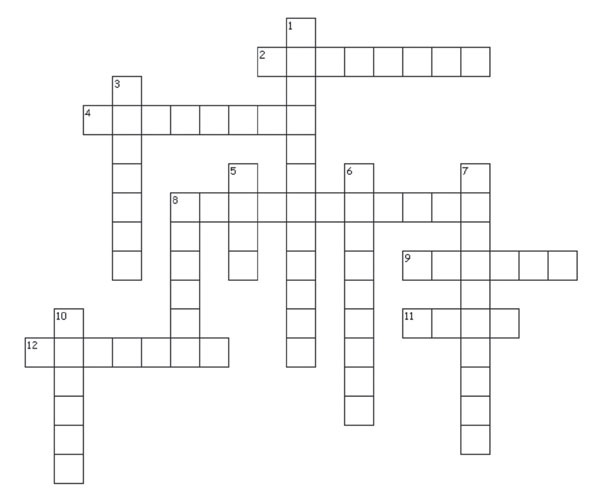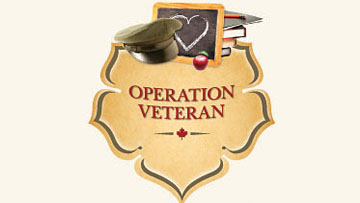Canada Remembers Times - 2016 Edition - Page 4
Operation Veteran
Operation Veteran logo.
(Image: Canadian War Museum)
Dr. Paul Kavanagh and his son were having lunch at the Canadian War Museum cafeteria in 2009 when a proud looking older Veteran in front of them caught their attention. When the Veteran tried to pay for his lunch, to his embarrassment, he could not afford it. Kavanagh quietly paid the bill but never forgot that day.
That year, he founded Operation Veteran with the Ottawa museum to make sure that all Veterans would be honoured with a complimentary meal there. Thanks to contributions from across Canada, it has raised over $200,000 so far. Thousands have benefited from this initiative!
Operation Veteran also supports the "Supply Line" program, which invites teachers from across the country to borrow a Discovery Box from the Canadian War Museum so students can better understand history. These boxes are full of First World War-related materials such as barbed wire, maps, scratchy wool uniforms and steel helmets for hands-on learning.
What a great way to honour Veterans and raise awareness of their sacrifices with youth. Operation Veteran is truly food for thought.
Tomb of the Unknown Soldier
The Tomb of the Unknown Soldier in Ottawa.
(Photo: Veterans Affairs Canada)
Canada and many other countries around the world have their own Tomb of the Unknown Soldier—special public memorials that contain the remains of a fallen serviceman whose identity is not known.
During the First World War, conditions on the battlefield were often very chaotic and many of those killed in action could not be recovered or identified. To serve as a way to honour all who gave their lives, the remains of a single fallen unknown soldier were taken and reburied in a special tomb in his home country.
In May 2000, Canada’s Unknown Soldier was disinterred from a war cemetery near Vimy Ridge, in France, and laid in state on Parliament Hill, in Ottawa, where thousands filed past to pay their respects. He was then buried with great ceremony in front of the National War Memorial, with soil from every province and territory across Canada being added, as well as an eagle feather to represent our First Nations.
Today, our Tomb of the Unknown Soldier honours the more than 118,000 brave Canadian men and women from all branches of service who have sacrificed their lives in the cause of peace and freedom over the years.
An airman in three wars
Wilfred Curtis.
(Photo: Canadian War Museum 19770650-010)
Wilfred Curtis was born in Havelock, Ontario, and enlisted in the Canadian Expeditionary Force in 1915 during the First World War. In a time before Canada had an air force of its own, he transferred to Britain’s Royal Naval Air Service and served as a fighter pilot on the Western Front. He was decorated for his bravery twice, being awarded the Distinguished Service Cross and bar. Curtis ended the war as a member of the Royal Air Force and was credited with a remarkable 13 aerial victories—officially making him an ace.
When the Second World War erupted in 1939, Curtis would earn an impressive reputation while serving in several senior staff positions with the Royal Canadian Air Force in Canada and in the United Kingdom.
After the war, Curtis was Canada’s Chief of Air Staff from 1947 to 1953, and held this post during the Korean War. He also oversaw a major growth in the size of the Royal Canadian Air Force as the development of the Cold War saw our country enlarge its military forces to meet the possible new threat. For his great drive and leadership, Air Marshal Curtis is considered by many to be the "Father of Canada’s Post-War Air Force".
20 years of sharing love!
Hand-made valentine cards.
(Photo: Veterans Affairs Canada)
Did you know that 2016 marks the 20th anniversary of Veterans Affairs Canada’s participation in the popular "Valentines for Vets" campaign? The touching idea was introduced by Chicago Tribune columnist Ann Landers in 1989 and quickly spread across the border. Today, the program sees the distribution of thousands of hand-made cards to Veterans living in long-term care facilities across Canada. What a wonderful way to thank those who risked their life for our freedom! Why don’t you make a card, too?
Six thousand kilometres in the saddle
Paul Nichols during his 2015 journey.
(Photo: Veterans Affairs Canada)
How far would you go to share an important message? Imagine leaving the Pacific coast in April on an eight-month journey on horseback across Canada, and arriving at the Atlantic Ocean just before winter! That’s what Paul Nichols, a Canadian Armed Forces Veteran who served in the Balkans in the 1990s, did with friends.
One of the things that Nichols wanted to accomplish was spread a simple message: Canadians are proud of their Veterans but they sometimes forget about younger service men and women. People tend to think of Veterans as older men who served in the Second World War or the Korean War. Yet some of today’s Veterans are still in their twenties, but they have taken part in intense military missions in troubled places around the world that took a heavy toll on them.
During his journey, he was joined at different points by a total of more than 300 Veterans of all ages, helping share the message and connect with their communities. The amazing ten-province ride across Canada ended in November 2015 in St. John’s, Newfoundland and Labrador, but it could just be the beginning of a new appreciation for our different generations of Veterans.
No stone left alone
Ceremony at South Haven Cemetery in Edmonton in 2014. To learn more, visit: No
Stone Left Alone Memorial Foundation
(Photo: Nic Wolch)
For years, a family visited their relatives’ graves at Edmonton’s Beechmount Cemetery to lay a poppy. As the children grew older, they started to ask who remembers the other Veterans buried there.
It was a very good question, so their mother Maureen Bianchini-Purvis would go on to launch the No Stone Left Alone Foundation. The purpose was to recognize the sacrifices of our men and women in uniform by placing a poppy on every Veteran’s headstone.
The program has expanded and ceremonies now take place across the country. Each includes the reading of the Act of Remembrance and the playing of the Last Post, followed by students placing a poppy on each Veteran’s grave marker in the cemetery.
More and more fields of poppies are sprouting up across Canada. How about in your community?
Did you know?
The Battle of Vimy Ridge is such an important part of Canada’s national heritage that it has been highlighted in many ways. In 2012, a new design for our country’s $20 bill was unveiled that features poppies and the majestic Canadian National Vimy Memorial in France. Check it out today … maybe you have remembrance in your wallet!
Crossword Puzzle
Did you read the newspaper stories carefully? All the answers to the crossword clues are found in the newspaper.

Across
- 2. Province in Afghanistan where Operation Medusa was launched in 2006.
- 4. Hometown of Wilfred Curtis, Canadian airman who served in three wars.
- 8. French village where tanks were used for the first time during the Battle of the Somme in 1916.
- 9. Nova Scotia town where the No. 2 Construction Battalion was formed in 1916.
- 11. Ridge in France that Canadians captured in April 1917.
- 12. Place in Europe where Canadian Armed Forces Veteran Paul Nichols served in the 1990s.
Down
- 1. Province where war-time ship radio operator Fern Blodgett was born.
- 3. Fierce Korean War battle fought by Canadians in April 1951.
- 5. Last name of Chinese-Canadian Veteran elected MP in Vancouver in 1957.
- 6. First name of the Smith brother who was awarded the Military Cross in September 1916.
- 7. Edmonton cemetery where the "No Stone Left Alone" project began.
- 8. Last name of the 1960 National Memorial Cross Mother.
- 10. Last name of Canadian Veteran who competed at the 2008 Summer Paralympic Games.
- Date modified:





